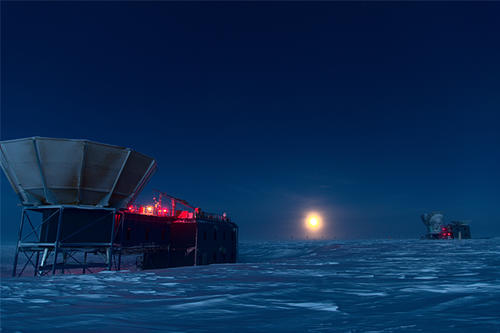
Arriving in Minnesota in January 2019, West Coast native Nathan Precup found Minnesota winters a distinct departure from what Seattle had to offer.
Now Precup, an aerospace engineer in the School of Physics and Astronomy, College of Science and Engineering, is spending a year at the Amundsen-Scott South Pole Station, where it’s now winter and temperatures can dip below -100 degrees Fahrenheit. He’s there to ensure the optimal operation of the BICEP Array, a composite of four large telescopes. Leading the team that built and assembled the array are U of M physics professor Clem Pryke, along with colleagues at Harvard, Stanford and Caltech.
“This is a once-in-a-lifetime experience, but the sum total of it all is really an amazing thing,” says Precup, the sole U of M team member wintering at the Pole. “I really believe that this type of research is important."
In the middle of the coldest continent, the BICEP team pursues a hot topic.
Physicists hypothesize that 13.8 billion years ago, a tiny subatomic-sized speck expanded to create the entire observable Universe in an infinitesimally small fraction of a second. This would have created ripples in the fabric of space called gravitational waves. The BICEP Array is designed to detect them; if found, physicists hope they will illuminate the origins of the four fundamental forces that shape the cosmos—gravity, electromagnetism, and two forces that govern the atomic nucleus.
When he’s not busy with BICEP, Precup visits the station’s gym, socializes with the three and a half dozen other workers spending the winter there, or just goes out to watch the night sky. It’s not difficult when the night lasts six months, although that includes a good two months of twilight.
“Going outside every day that it’s clear is incredible,” Precup says. “I mean, the night sky is gorgeous. This is the first year I’ve ever seen an aurora, and it’s amazing. It’s beautiful.”
- Categories:
- Science and Technology





